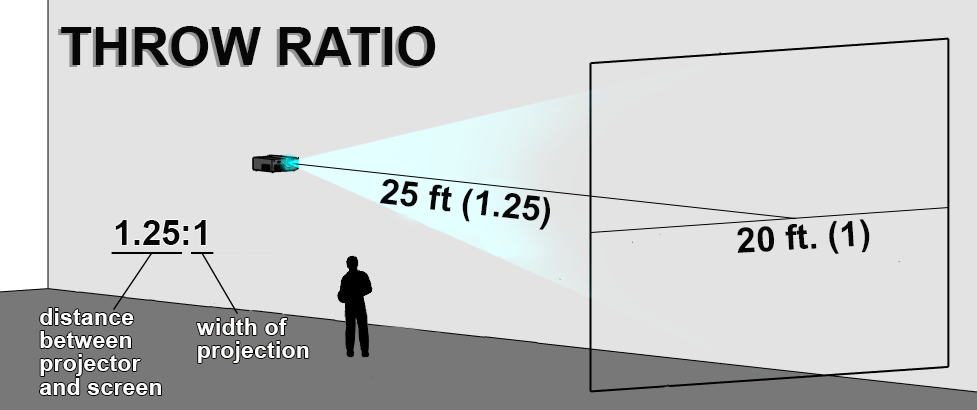

Projectors have become an essential tool for various applications, including home theater setups, classrooms, conference rooms, and large-scale events. When selecting a projector, there are several factors to consider, such as resolution, brightness, and connectivity options. One crucial aspect that often goes unnoticed but significantly affects the projection size and distance is the projector throw ratio. In this article, we will delve into the concept of throw ratio, its importance, and how it influences your projection setup.
What is Projector Throw Ratio?
The throw ratio of a projector is the ratio between the distance from the projector lens to the screen and the width of the projected image. It determines the size of the image produced at a given distance. The throw ratio is usually expressed as a number, such as 1.5:1 or 0.5:1, where the first number represents the distance from the lens to the screen, and the second number indicates the width of the image.
Throw Ratio and Projection Distance:
The throw ratio plays a crucial role in determining the projection distance required for achieving a desired image size. To calculate the projection distance, you can multiply the throw ratio by the width of the desired image. For example, if a projector has a throw ratio of 1.5:1 and you want to achieve a 100-inch wide image, the projection distance would be 1.5 times the width, which is 150 inches or 12.5 feet.
Types of Throw Ratios:
Ultra Short/Short Throw: A short throw projector typically has a throw ratio of less than 1:1, often around 0.5:1 and 0.24:1 for ultrashort throw. These projectors can produce large images even in confined spaces, making them suitable for small rooms or installations where space is limited. They are positioned close to the screen, resulting in a shorter throw distance.
Standard/Normal Throw: Standard throw projectors usually have a throw ratio ranging from 1:1 to 2:1. They are commonly used in larger rooms, such as conference halls or classrooms, where a significant throw distance is available.
Long Throw: Long throw projectors have throw ratios greater than 2:1 and are designed for large venues such as auditoriums or outdoor events. They require a considerable distance between the projector and the screen to achieve large image sizes.
Choosing the Right Throw Ratio:
Selecting the appropriate throw ratio depends on various factors, including the room size, desired screen size, and available installation space. It is essential to consider the throw ratio alongside the projector's specifications and the environment in which it will be used.
If you have limited space and want a larger image, a short throw projector would be a suitable choice. However, if you have ample space and require a massive projection, a long throw projector might be more appropriate. Standard throw projectors offer versatility for moderate-sized rooms.
Conclusion:
Understanding projector throw ratio is crucial for planning an optimal projection setup. By considering the throw ratio in conjunction with your desired screen size and available space, you can determine the appropriate projector placement and projection distance. Whether you opt for a short throw, standard throw, or long throw projector, selecting the right throw ratio will help ensure an immersive and visually pleasing projection experience.



10 Comment(s)
1
1
1
1
1
1
1
1
1
1
1
1
1
1
1
1
1
1
1
1
1
1
1
1
1
1
1
1
1
1
1
1
1
1
1
1
1
1
1
1
1
1
1
1
1
Leave a Comment